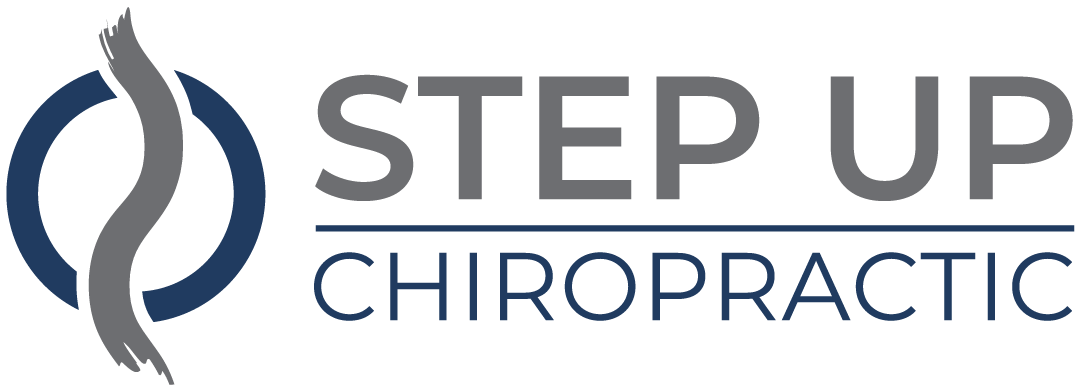You've likely experienced the frustration of chronic migraines, feeling trapped in a cycle of pain that seems unending. You might've tried various treatments, only to find little relief. In your quest for answers, you may not have considered the power of a migraine diary and the impact of lifestyle changes. By pinpointing triggers and making deliberate adjustments, you can start to reclaim your life. But what specific steps did I take that truly made a difference? The journey to relief isn't straightforward, and it could hold the key to your own breakthrough.
Understanding Chronic Migraines
Understanding chronic migraines starts with recognizing their complexity. You don't just experience a headache; it's a multifaceted condition involving neurological, environmental, and genetic factors. The pain can vary in intensity, often accompanied by nausea, sensitivity to light, and sound. These symptoms can disrupt your daily life, making routine tasks feel insurmountable.
You might notice that triggers play a significant role in your migraines. Common culprits include stress, hormonal changes, certain foods, and even weather fluctuations. Identifying these triggers is vital for managing your condition. Keeping a migraine diary can help you track patterns and uncover what prompts your migraines, giving you a clearer picture of your situation.
It's essential to understand that chronic migraines aren't just about the pain you feel during an episode. They can lead to a cycle of anxiety and fear about when the next attack will strike. This anticipation often heightens your sensitivity to stress, potentially making the condition worse.
You should also know that chronic migraines can affect anyone, regardless of age or gender, though they're more common in women. The frequency of your migraines can also change over time, which might make it seem like there's no stable pattern to your suffering.
Recognizing the intricacies of chronic migraines is the first step toward finding effective relief. By becoming aware of the factors contributing to your condition, you'll be better equipped to navigate the challenges and seek appropriate treatment.
My Initial Treatment Attempts
After recognizing the complexities of chronic migraines, you might feel overwhelmed and enthusiastic to find relief. You'll likely immerse yourself in a myriad of treatment options, hoping for the one that works for you.
Initially, you may turn to over-the-counter pain relievers like ibuprofen or acetaminophen. While they can offer temporary respite, you soon discover they don't address the underlying issue.
Next, you might consult your doctor, who may suggest prescription medications like triptans. These can be effective for acute attacks, but you might find yourself grappling with side effects. Nausea, dizziness, or even rebound headaches can complicate your experience.
The trial-and-error phase can be frustrating, as you juggle different medications, hoping to find the right combination.
You might also explore alternative therapies. Acupuncture, for instance, could pique your interest. Many people swear by its benefits, but you might feel skeptical at first. Still, you decide to give it a shot.
The sessions may provide some relief, but they require commitment and may not yield consistent results.
In addition, lifestyle changes like regular exercise and hydration could become part of your routine. You might start noticing how these small adjustments influence your migraines, but they still don't completely eliminate them.
Each attempt leaves you with valuable insights, even if it feels like a long road ahead. The key is to stay persistent and keep searching for the solutions that work best for you.
Identifying Triggers
Identifying your migraine triggers is essential for managing chronic pain effectively. Understanding what sets off your migraines can empower you to take control of your condition.
Start by keeping a detailed migraine diary. This will help you track when your migraines occur, how long they last, and the severity of the pain. Note any potential triggers you notice leading up to an attack.
Here are three common triggers to reflect on:
- Stress: Emotional stress can be a considerable contributor to migraines. Pay attention to your stress levels and think about implementing relaxation techniques, such as deep breathing or meditation.
- Sleep Patterns: Both lack of sleep and oversleeping can trigger migraines. Try to maintain a consistent sleep schedule, aiming for 7-9 hours of quality sleep each night.
- Environmental Factors: Bright lights, strong odors, or changes in weather can also lead to migraines. Identify any environmental cues in your diary and make adjustments to your surroundings when possible.
Once you've gathered enough data, look for patterns in your migraine diary. This analysis can help you pinpoint specific triggers and develop strategies to avoid them.
Dietary Adjustments
When managing chronic migraines, identifying trigger foods is essential for your relief. You might find that certain foods can spark an attack, so keeping track of what you eat can help.
Additionally, staying hydrated plays an important role in preventing migraines, so make sure you're drinking enough water throughout the day.
Trigger Foods Identification
Understanding which foods trigger your chronic migraines is essential for effective dietary adjustments. Identifying these trigger foods can help you manage your condition and reduce the frequency of your migraines.
Start by keeping a detailed food diary. Write down everything you eat and drink, along with the times you experience migraines. This will help you spot patterns and make connections between your diet and migraine occurrences.
Here are three common trigger foods to evaluate:
- Aged Cheeses: These often contain tyramine, which can provoke migraines in some people.
- Processed Meats: Foods like hot dogs and deli meats may contain preservatives and additives that trigger headaches.
- Alcohol: Many individuals find that certain types of alcohol, particularly red wine, can lead to migraines.
Once you've identified your triggers, it's important to eliminate them from your diet. This may take some time and experimentation, but making these changes can lead to significant relief.
Hydration Importance
Maintaining proper hydration plays a significant role in managing chronic migraines. When you're dehydrated, your body can react with headaches or migraines, making it essential to drink enough water throughout the day. Aim for at least eight 8-ounce glasses of water daily, but adjust based on your activity level and climate.
You mightn't realize it, but even mild dehydration can trigger migraines. So, keep a water bottle handy and sip regularly, especially if you're active or in a hot environment.
You can also incorporate hydrating foods into your diet, like cucumbers, watermelon, and oranges, to boost your fluid intake.
Pay attention to your body's signals. If you notice headache symptoms creeping in, check your hydration levels first. Sometimes, a simple glass of water can provide the relief you need.
Stress Management Techniques
Managing stress is essential for reducing chronic migraines, and techniques like mindfulness meditation and breathing exercises can be game changers.
By incorporating these practices into your daily routine, you can cultivate a calmer mind and body.
Let's explore how these methods can help you find relief.
Mindfulness Meditation Practices
Mindfulness meditation practices offer a powerful way to reduce stress and alleviate the frequency and intensity of chronic migraines. By focusing your attention on the present moment, you can cultivate a sense of calm that helps diminish the tension often linked to migraines.
Here are three effective techniques you can incorporate into your routine:
- Body Scan: Lie down comfortably and slowly bring your attention to each part of your body, starting from your toes up to your head. Notice any sensations or tension you may be holding, and consciously relax those areas.
- Guided Imagery: Close your eyes and visualize a peaceful scene, like a beach or a quiet forest. Engage your senses by imagining the sounds, smells, and textures of that place. This can help transport your mind away from pain.
- Mindful Breathing: Focus on your breath as it flows in and out. Count your breaths or simply observe them without judgment. When your mind wanders, gently guide it back to your breathing.
Incorporating these practices into your daily life can lead to significant improvements in managing stress and reducing migraine symptoms.
Breathing Exercises Techniques
Breathing exercises can greatly enhance your stress management toolkit, complementing the benefits gained from mindfulness meditation. By incorporating simple techniques into your daily routine, you can create a powerful practice that helps reduce the frequency and intensity of your chronic migraines.
Start with diaphragmatic breathing. Sit comfortably, place one hand on your belly, and inhale deeply through your nose, allowing your belly to rise. Exhale slowly through your mouth. Repeat this for five minutes, focusing solely on your breath. This technique calms your nervous system and promotes relaxation.
Another effective method is the 4-7-8 technique. Inhale for a count of four, hold your breath for seven seconds, and exhale for eight seconds. This rhythmic pattern helps lower anxiety and stress levels, making it easier to manage migraine triggers.
You can also try box breathing, where you inhale for four counts, hold for four counts, exhale for four counts, and hold again for four counts. This method enhances focus and reduces tension.
Medication Options Explored
When it comes to finding relief from chronic migraines, exploring medication options is often a significant step. You might feel overwhelmed with choices, but understanding the different types can help you make informed decisions.
Here are three primary categories of medications to evaluate:
- Preventive Medications: These are taken daily to reduce the frequency and severity of migraines. Common options include beta-blockers, antidepressants, and anticonvulsants. Your doctor can help you find the right one based on your specific needs.
- Abortive Medications: These are used to treat migraines once they start. Nonsteroidal anti-inflammatory drugs (NSAIDs) like ibuprofen or specialized medications called triptans can be effective. It's important to take these as soon as you notice symptoms for the best results.
- Rescue Medications: If other treatments don't work, your doctor might prescribe rescue medications, which are stronger and can help in severe cases. Options include ergots or opioids. These should be used sparingly due to potential side effects and dependency issues.
Consulting with your healthcare provider is fundamental to navigate these options. They'll assess your medical history and lifestyle to tailor a treatment plan that suits you.
Keep track of what works and what doesn't, as this information can help refine your approach over time. Finding the right combination may take time, but it's worth the effort for long-term relief.
Alternative Therapies
Finding effective relief from chronic migraines can extend beyond medication; alternative therapies may offer promising benefits. You might want to explore options like acupuncture, which involves inserting thin needles into specific points on your body. Many people report reduced frequency and intensity of migraines after a few sessions, as it can help balance energy flow and relieve tension.
Another avenue to take into account is yoga. This practice not only promotes relaxation but can also improve your posture and reduce stress, common triggers for migraines. Incorporating gentle stretches and breathing exercises into your routine can make a substantial difference in how you feel.
Herbal supplements also deserve your focus. Butterbur and feverfew have gained popularity for their potential to prevent migraines. However, it's important to consult with a healthcare professional before starting any new supplements to ascertain they're safe for you.
Mindfulness meditation is another tool you might find useful. By practicing mindfulness, you can develop a greater awareness of your body and its signals, potentially identifying triggers earlier. Regular meditation can also reduce stress and anxiety, further decreasing your migraine occurrences.
Lastly, a nutritional approach could help. Keeping a food diary to track what you eat may reveal specific dietary triggers. You might benefit from working with a nutritionist to develop a diet that supports migraine prevention.
Importance of Sleep
Adequate sleep plays a significant role in managing chronic migraines. When you prioritize sleep, you give your body the chance to recover and reset, which can reduce the frequency and severity of your migraines. Lack of sleep can trigger attacks, so it's essential to cultivate healthy sleep habits.
Here are three key reasons why sleep is vital for migraine management:
- Restores Brain Function: Sleep allows your brain to process and consolidate information while regulating various neurotransmitters. This balance can help prevent migraine triggers linked to stress and anxiety.
- Reduces Stress Levels: Insufficient sleep can elevate stress hormones like cortisol. High stress is a common trigger for migraines, so getting enough rest can help lower these levels and promote relaxation.
- Enhances Pain Tolerance: A well-rested body can cope better with pain. Studies show that sleep deprivation can lower your pain threshold, making you more susceptible to migraine pain. By ensuring you get enough sleep, you may increase your resilience against migraine attacks.
To improve your sleep quality, establish a consistent bedtime routine, create a comfortable sleep environment, and limit screen time before bed.
Creating a Support System
Building a supportive network is essential for managing chronic migraines effectively. You can't go through this journey alone, and having people who understand what you're experiencing can make a huge difference.
Start by reaching out to family and friends. Share your struggles and explain how they can help. Maybe it's offering a listening ear or assisting with daily tasks when you're not feeling well.
Consider joining support groups, either online or in-person. Connecting with others who share similar experiences provides a sense of community and validation. You'll find that you're not alone in your battle against migraines. These groups can also be a treasure trove of practical advice and coping strategies.
Don't forget about healthcare professionals. Keep an open line of communication with your doctor, neurologist, or therapist. They can guide you in managing your condition and provide resources for additional support. Having a dedicated team that understands your needs is invaluable.
Lastly, think about your work environment. If you're employed, discuss your situation with your employer, if you feel comfortable. They may offer accommodations to help you manage your migraines more effectively, like flexible hours or the option to work from home on tough days.
Creating this support system is a proactive step towards finding relief. It empowers you and helps you navigate the challenges of chronic migraines with a network that truly cares.
Conclusion
Finding relief from chronic migraines is possible, and you can take control of your life. By tracking your triggers, adjusting your diet, managing stress, and prioritizing sleep, you can greatly reduce migraines. Explore various medication options and alternative therapies to discover what works best for you. Don't underestimate the power of a supportive network—connecting with others who understand your struggles can make all the difference. You deserve to live migraine-free and reclaim your well-being.




